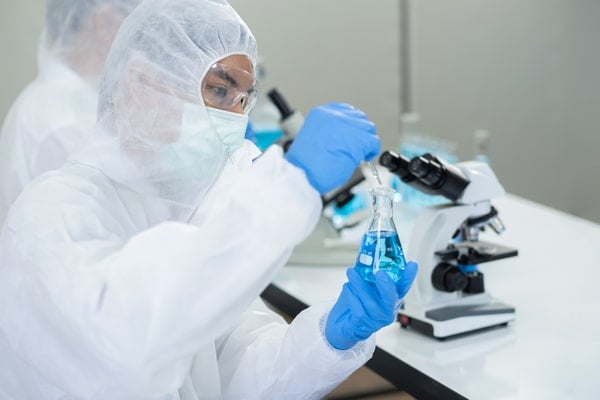Ensuring Safety and Integrity: The Significance of Blood, Tissues, Biologicals & ATMPs Regulations in Australia
In Australia, medicinal products sourced from human blood or tissues represent a critical component of the healthcare system. Blood, blood components, tissue-derived products, biologicals and ATMPs are regulated by the Australian TGA (Therapeutic Goods Administration) under the Therapeutic Goods Act of 1989. Source: TGA Guidance.
An important regulation covering human blood, plasma, tissues and other cellular products for medicinal use in Australia is:
The “Australian code of good manufacturing practice for human blood and blood components, human tissues and human cellular therapy products” (the “GMP Code” for blood and tissue products).
Yet these products are wide-ranging in scope. Human-sourced products range from blood donations to biological medicines to gene editing therapies; and include faecal microbiota transplants, advanced therapeutic medicinal products (ATMPs) and other cellular therapies.
Depending on the product type, other Australian regulations and industry guidance may also apply.

Learn the Australian GMP rules and regulations for blood and tissue collection and processing in an online Certificate GMP Course.
Note: For Annex 1 (Sterile Medicinal Product Manufacturing), click here.
Examples of other relevant Australian regulations and guidance for whole blood, blood components or plasma-derived products, tissue-derived products or biologicals include:
- The Australian Regulatory Guidelines for Biologicals (ARGB).
- Autologous human cells and tissue/s products regulation
- Faecal Microbiota Transplant (FMT) product regulation
- Biologicals Regulatory Framework and TGA Guidance on Biological Standards
- Regulations for Advanced Therapies/ATMPs
Importance of TGA Regulations for Blood, Tissues, Biologicals, and Cellular Therapies
Blood, blood components, human tissues, cellular therapy products and biologicals:
- Play a pivotal role in safeguarding public health in Australia
- Are often in high demand and sometimes prone to shortages
- Help to maintain the availability and integrity of life-saving medical procedures/treatments
- Must comply with regulations/GMP rules for collection/donor sourcing, testing, processing, packaging, labelling and recordkeeping in order to ensure patient safety

Human-sourced medicinal products, such as blood and tissue products, offer life-saving treatments. Life-saving products come with risks, however.
These risks include contracting a transmittable disease (hepatitis, HIV, etc.) during a blood transfusion or transplant or receiving an incompatible blood type during a blood transfusion if such products aren’t sourced, recorded, processed, tested and labelled according to the GMP Code and other regulatory requirements.
Mitigating Risks
Compliance with the GMP Code and Australian Regulations
- Australian regulations covering these product types are designed to protect patient safety and public health.
- It is thereby crucial that all employees, clinical trial researchers, contractors and transport personnel involved with blood & tissue products, biologicals, ATMPs and other cellular therapies receive appropriate training in regulatory compliance & GMP.
Regulatory Compliance & GMP Training for personnel is required by law

Stringent rules apply to the sourcing, processing, testing and release of products sourced from human blood and tissues (e.g., blood donations, tissue/organ donations, biological products, etc.). These GMP requirements are described in the GMP Code for Blood, Plasma and Tissue Products, administered by the Australian TGA (Therapeutic Goods Administration).
Because blood and tissue-derived products carry high risks when used for medical and/or restorative therapy treatments, the collection, handling, labelling, processing and storage of such materials must meet good manufacturing practice (GMP) standards and stringent regulations.
Ensuring the Safety of Blood and Tissue Products, ATMPs, Biologicals & Related Cellular Therapies
- There are ongoing advances in treatments utilising blood, tissue, biologicals and/or cellular therapy products.
- One of the primary objectives of Australian regulations covering GMP for blood, plasma and tissue-derived products is to guarantee the safety of these products.
As technology evolves, it remains crucial for blood bank personnel and hospital teams, clinical researchers, and manufacturers of these products to adhere to regulations and GMP/GxP requirements.

Blood transfusions are a life-saving medical intervention, but they come with inherent risks if not handled and processed with the utmost care. Fortunately, Australian regulations are in place to require appropriate screening of donors (e.g., for infectious diseases, such as HIV, hepatitis, and other blood-borne pathogens), to minimise the risk of transmission to recipients.
Blood Donation Screening & Safety Requirements
Screening of blood or plasma donors and tissue donors in Australia involves mandatory testing for:
- Hepatitis B
- Hepatitis C
- Human Immunodeficiency Virus (HIV)
- Human T-lymphotropic virus types I and II (HTLV)
- Syphilis
- Other factors where deemed necessary
In addition to screening, Australian regulations require stringent recordkeeping to ensure product traceability and risk-based product testing, packaging, labelling, and product release procedures.
Furthermore, these regulations dictate strict standards for the processing and storage of blood and tissue products, biologicals and ATMPs, to prevent contamination; and to ensure the preservation of the product’s therapeutic properties.
Proper testing, labelling, and documentation are essential components of the regulatory framework, contributing to the overall safety of blood and tissue products used in medical treatments.
Tissue Transplants and Donations
In addition to blood, regulations governing tissue transplantation are crucial for maintaining the safety and efficacy of these procedures. Human tissues, such as corneas, heart valves, and bone grafts, can be donated to improve the lives of recipients. As with blood and plasma products, the sourcing, processing, and transplantation of such tissues must adhere to stringent guidelines.
Human-Derived Medicines: Ethical Considerations, Public Health & Trust
The implementation of comprehensive blood and tissue regulations is not only about meeting safety standards, but also about fostering public trust in healthcare systems, surgical treatments, blood transfusions, and medicinal products.
Australians need confidence when they donate to (or receive) medicinal treatments involving human blood, tissues, or cells; e.g., confidence that the Australian healthcare system will:
- Handle their contributions with the highest level of care and responsibility
- Maintain confidentiality for donors and recipients (adhering to health data privacy laws)
- Adhere to GMP rules and other regulatory compliance requirements
Ethical considerations play a significant role. These considerations, covered in the Australian Regulations, include:
- Respecting the rights of donors
- Ensuring informed consent is received prior to collection
- Maintaining the privacy and confidentiality of donor information
These measures contribute to upholding the dignity and well-being of individuals involved in the donation process.
Conclusion
Blood, Tissues, Biologicals and ATMP regulations in Australia are administered by the TGA.
These regulations aim to prevent the transmission of diseases, ensure the traceability of blood, tissues, biologicals and ATMPs throughout the entire process, and maintain the quality of donated blood products, plasmas, tissues and cells.
Thorough screening of blood and tissue donors, meticulous processing techniques, and ensuring proper packaging, labelling and storage conditions are maintained, are all integral to complying with these regulations.
The robust regulations governing blood and tissue in Australia are paramount to the overall success of the healthcare system. These regulations serve as a protective shield, ensuring the safety of both donors and recipients, upholding ethical standards for blood and tissue-derived products and transfusions, and maintaining trust in the healthcare delivery system.
As medical technologies advance, regulations will continue to evolve to address emerging challenges and opportunities, ultimately ensuring that the health and well-being of the Australian population remain at the forefront of healthcare priorities.
Addendum: Blood & Tissue Product Types (Examples)
Examples of product types sourced from human blood, blood components, tissues or bones:
- Red Blood Cells (RBCs): Red blood cells carry oxygen from the lungs to the rest of the body, and returns carbon dioxide to the lungs for exhalation; RBC transfusions are common in cases of severe anemia, surgery, trauma, or certain medical conditions that affect red blood cell production.
- Platelets: Platelets are cell fragments in the blood that aid in clotting; Platelet transfusions may be necessary for individuals with low platelet counts, which may arise from conditions such as leukemia, chemotherapy treatments, and/or bone marrow disorders.
- Plasma: Plasma is the liquid component of blood that contains water, electrolytes, proteins, hormones, and waste products. Plasma transfusions are sometimes used to treat conditions like clotting factor deficiencies, liver disease, or severe burns.
- Cryoprecipitate: Cryoprecipitate is a component of plasma rich in clotting factors. It is often used to treat bleeding disorders, such as hemophilia or von Willebrand disease.
- Bone Marrow: Bone marrow contains stem cells that produce blood cells. Transplantation of bone marrow is a treatment for certain cancers, such as leukemia, as well as bone marrow disorders.
- Corneas: Corneal tissue is commonly used for corneal transplants to restore vision in individuals with damaged or diseased corneas.
- Heart Valves: Donated heart valves, often from cadavers, can be used in heart valve replacement surgeries to treat conditions like aortic stenosis or regurgitation.
- Skin Grafts: Skin grafts, which can include both dermal and epidermal layers, are used to treat severe burns or other skin injuries.
- Vein Grafts: Blood vessels, typically veins, can be used as grafts in vascular surgeries to bypass blocked or damaged arteries.
- Tendon and Ligament Grafts: Tendon and ligament tissues can be used for grafts in orthopedic procedures, such as reconstructive surgeries for torn ligaments.
Note: Some products may need to comply with medical device regulations or a combination of regulations.
Source: TGA and related Government Agencies, Universities, medical texts and patient education materials compilations, et.al.
Further reading
National Blood Authority – Australia
Last updated on December 5th, 2023 at 09:01 am









